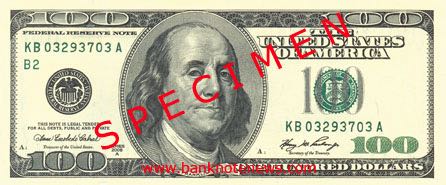United States
United States new sig/date (2017) 10-dollar note confirmed
28 11, 2018 07:18 Category: North America

Like P540, but new signatures (Jovita Carranza and Steven Mnuchin) and new date (2017).
Courtesy of Hyunchul Yoo.
United States new sig/date (2017) 20-dollar note confirmed
26 11, 2018 14:51 Category: North America
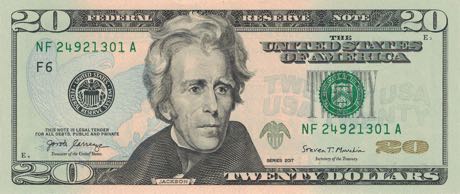
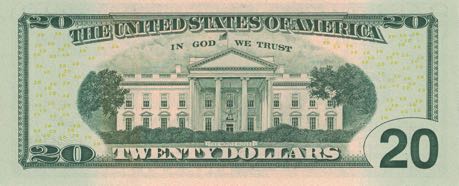
Like P541, but new signatures (Jovita Carranza and Steven Mnuchin) and new date (2017).
Courtesy of Dietmar Maruska.
United States new sig/date (2017) 1-dollar note confirmed
20 06, 2018 08:18 Category: North America
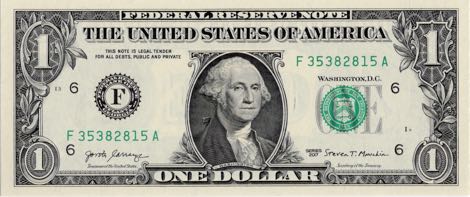
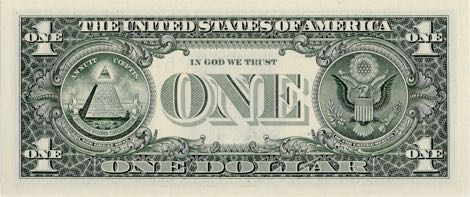
Like P537, but new date (2017) and new signatures (Jovita Carranza and Steven Mnuchin).
Courtesy of Peter Mosselberger.
Hawaii chapter of The Banknote Book is now available
14 09, 2017 10:42 Category: The Banknote Book | Oceania
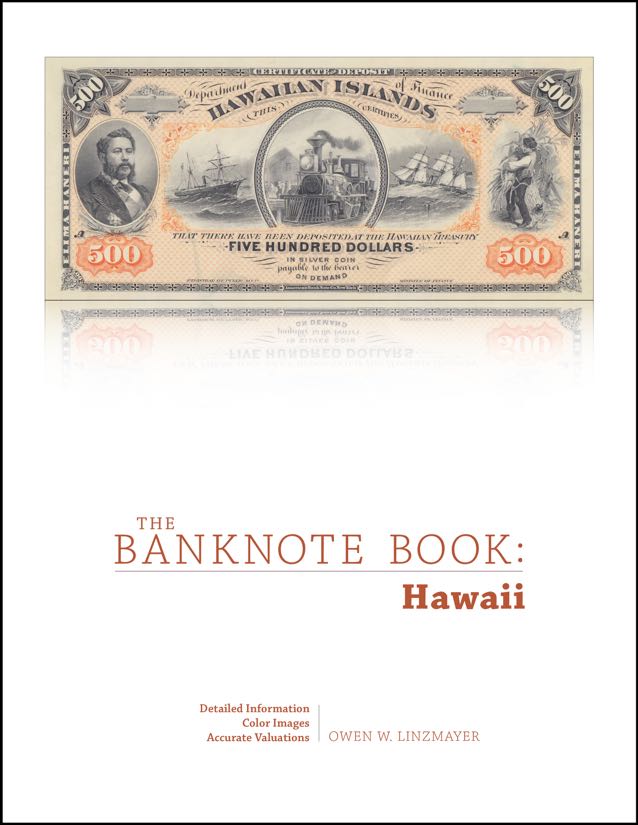
The Hawaii chapter of The Banknote Book is now available for individual sale and as a free download to subscribers.
This 10-page catalog covers notes issued by the Department of Finance from 1879 to 1899. Published 15 September 2017.
Each chapter of The Banknote Book includes detailed descriptions and background information, full-color images, and accurate valuations. The Banknote Book also features:
- Sharp color images of note’s front and back without overlap
- Face value or date of demonetization if no longer legal tender
- Specific identification of all vignette elements
- Security features described in full
- Printer imprint reproduced exactly as on note
- Each date/signature variety assigned an individual letter
- Variety checkboxes for tracking your collection and want list
- Date reproduced exactly as on note
- Precise date of introduction noted when known
- Replacement note information
- Signature tables, often with names and terms of service
- Background information for historical and cultural context
- Details magnified to distinguish between note varieties
- Bibliographic sources listed for further research
Subscribe to The Banknote Book
If you collect the entire world or a large number of countries, buying a subscription is the best deal because it's less expensive than buying chapters individually, and it entitles you to every chapter currently available as well as everything published—or revised (click here to see the Change Log)—during the term of your subscription.

Sign up for Email Notifications
If you would like to receive email notifications whenever a new chapter of The Banknote Book is published, please join the email list by clicking the button below.

United States new sig/date (2013) 100-dollar note confirmed
12 09, 2017 11:40 Category: North America
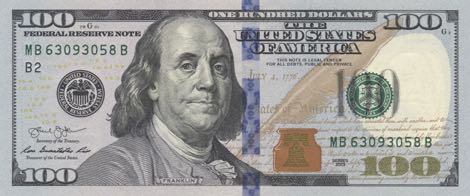

Like P536, but new date (2013) and new signatures.
Courtesy of Vladimir Buravlev.
United States new 5-, 10-, and 20-dollar note designs to be unveiled in 2020
21 04, 2016 08:37 Category: North America
According to an announcement by the United States Department of the Treasury on 20 April 2016, Alexander Hamilton will not be removed from the 10-dollar note to make way for a woman. Instead, Harriet Tubman (whose life was dedicated to fighting for liberty) will replace President Andrew Jackson on the front of the new 20-dollar note, though Jackson's image will appear on the back of the new note. The 5-dollar note will also be redesigned, and it's hoped that all three new designs will be unveiled in 2020 in conjunction with the 100th anniversary of the 19th Amendment, which granted women the right to vote.
Press release: United States Paper Money Errors
10 11, 2015 17:38 Category: North America | Book
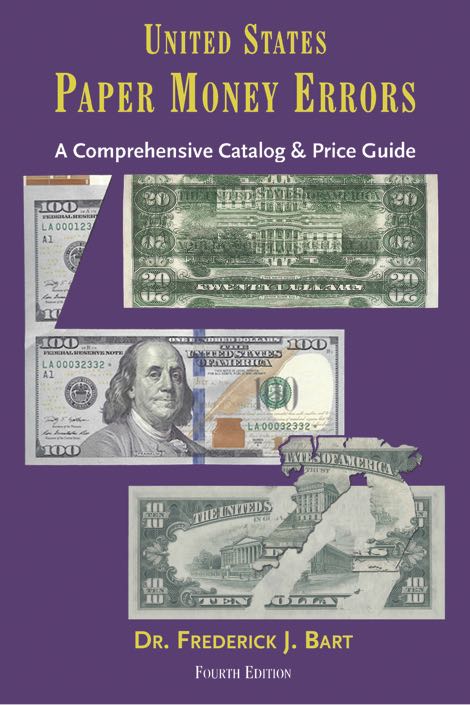
United States Paper Money Errors
Frederick J. Bart, 296 pages, soft cover, 146 x 228 mm, color illustrations, English, ISBN 978-0-87184-250-3, $27.95 (plus $5.75 shipping), Coin & Currency Institute, P.O. Box 399, Williston, Vermont 05495, http:www.coin-currency.com
New edition of comprehensive catalog and price guide makes first appearance since 2008
After a lapse of seven years, a new, fourth edition of United States Paper Money Errors, Fred Bart's ground-breaking book is now available. The 4th edition is more than just an update to the third recent – Bureau of Engraving and Printing (BEP) errors have been added, nearly all the illustrations have been changed, there is a rarity guide for each note, which additionally are now priced in four grades (EF, AU, Choice CU and Gem CU), and for the first time, there is a section showing some notes in color.
This has always been an enormously popular book, not only among established collectors, but also with newcomers seeking to learn more about their "find." There is no other book like it on the market. More than a price guide, its 296 5.75 x 9 inch pages contain a wealth of information on what to look for, as well as the mistakes to avoid. It is a necessity for all dealers, collectors, and anyone who comes into regular contact with paper money.
Error notes continue to carve an ever larger niche in paper money collecting. This edition of the definitive reference allows advanced collectors to recognize the value in their holdings and still permits members of the general public to identify potentially profitable notes encountered in circulation. The book offers more than 550 photos, making identification easy. Chapters are arranged according to the actual production sequence within the BEP providing a logical flow to the arrangement. The book begins with an overview of paper money production and a discussion of error collecting. The next section deals with first and second printing errors such as board breaks, double denominations, inverted backs, and missing and offset printings. The next section details the types of overprint errors including misaligned and missing overprints, mismatched serial numbers, and stuck digits. The last section is devoted to folds and other errors. In addition, historic photographs from the BEP offer a fascinating glimpse into currency production during a bygone era, contrasting sharply with the advanced technology in use today.
The print version of the book, ISBN 978-0-87184-250-3, has a list price of $27.95 and is available from dealers and wherever numismatic books are sold. It may also be ordered direct from the publisher, Coin & Currency Institute, P.O. Box 399, Williston, Vermont 05495 or online at www.coin-currency.com. $5.75 should be added to each order for shipping and handling. Major credit cards are accepted. Call toll-free 1-800-421-1866. Fax (802) 536-4787. E-mail: mail@coin-currency.com.
An E-book edition, ISBN 978-0-87184-005-9, is available for digital download or on USB stick at www.coin-currency.com, or for viewing on tablet-like devices, from the Amazon Kindle store. List price is $17.50
Preview pages are available for viewing at www.coin-currency.com.
COIN & CURRENCY INSTITUTE
P.O. Box 399, Williston, Vermont 05495
Tel. (802) 878-0822 • Fax (802) 536-4787
E-mail: mail@coin-currency.com
Contact: A.L. Friedberg
United States' efforts to honor woman on 10-dollar note ridiculed
22 06, 2015 12:24 Category: North America
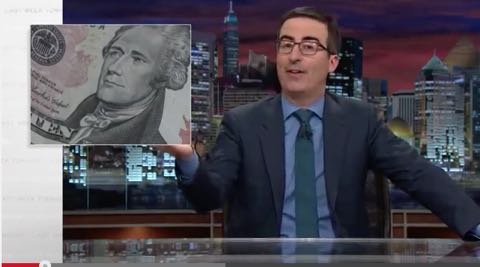
On the 21 June 2015 episode of HBO's Last Week Tonight, comedian John Oliver performed a funny segment on the recent annoucement that the United States will include a portrait of a woman on a revised 10-dollar note. Enjoy.
CoinWorld also has an interesting article on the subject written by Joe O'Donnell on 19 June 2015.
United States 2-dollar note to star in documentary mid-2015
20 05, 2015 09:52 Category: North America
United States new sig/date (2013) 1-dollar note confirmed
22 08, 2014 12:47 Category: North America

1 dollar, 2013. Like P530, but new date and new signatures.
Courtesy of Phil Martin.
United States new sig/date (2013) 50-dollar note confirmed
09 07, 2014 21:07 Category: North America
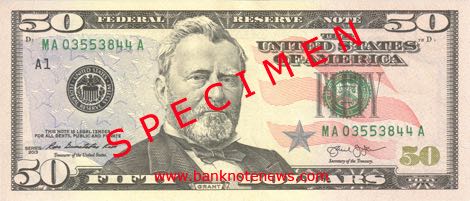
50 dollars, 2013. Like P534, but new date and new signatures (Gumataotao Rios & Jacob Lew).
Courtesy of Keith Potter.
United States new sig/date (2013) 2-dollar note confirmed
11 05, 2014 10:28 Category: North America

2 dollars, 2013. Like P516, but new date and new signatures (Gumataotao Rios & Jacob Lew).
United States new 100-dollar note's anti-counterfeiting measures
11 02, 2014 08:42 Category: North America
The following is a guest post written specifically for BanknoteNews.com by Forextraders.com. Enjoy. —Owen W. Linzmayer
The latest “Benjamins” exude anti-counterfeiting measures, but not all
It is a new day, and more than likely, there is a press release in some part of the world announcing the latest banknote design. The plethora of similar announcements would seem to suggest that printing new banknotes and putting them into circulation is not a costly affair, but keeping one step ahead of counterfeiters has become a true scientific art form in recent years.
The critical goal for every new issuance these days is, according to Federal Reserve Board Governor Jerome Powell, to incorporate “security features that make it easier to authenticate, but harder to replicate.” With today’s color copying technology and a host of terrorist bands seeking illicit funding across the planet, the ability of and the cost to prevent counterfeiting on a global scale has escalated. Career enforcement officials, however, are the first to admit that counterfeiting cannot be eliminated, but only contained at acceptable levels.
The most heavily counterfeited banknote within the U.S. borders is the $20 note, but outside our national borders, the $100 note, frequently referred to as a “Benjamin” reigns supreme. More than two-thirds of the Benjamins circulate outside of our country, and of the US$1.15 trillion in general currency in public use, roughly one percent of that figure is believed to be counterfeit. Ever since the Federal government stopped issuing $500, $1,000 and $10,000 notes in 1969, the $100 note ascended to the top of heap as our largest denominated banknote in circulation.
How have Americans adjusted to the new $100 notes that were released 8 October 2013? With the economy as tight as it is, there is doubt that it has become a collector’s item, but the look and feel seems destined to resemble so-called monopoly money, without the color plumage witnessed on most other countries’ official legal tender. Per the press release, the most noticeable new additions are “a ribbon with images that move when the bill is tilted [Crane’s Motion thread] and a drawing that changes colors depending on its angle.” These two items join half a dozen other anti-counterfeiting measures employed in the latest design.
Is the U.S. government in the lead when it comes to these anti-fraud techniques?
The prevailing anti-counterfeiting features include threads, ribbons, holograms, UV inks or fibers, or color-changing inks to thwart copiers and printing devices. The U.S. has avoided holograms or UV light features, but the UK and the Eurozone have chosen both of these options. A few countries have actually gone a different route and chosen polymer, as opposed to paper, for their notes’ substrates. They last longer and are more difficult to replicate. Australia, Canada, and Mexico, have embarked upon this path, and many other countries are exploring polymer, including India and the United Kingdom.
What is new on the fraud prevention horizon?
As with the pharmaceutical industry, banknote scientists are looking to Mother Nature for clues for unique new innovations. From the field known as “biomimicry,” nano-optics are being used to create iridescent colors in much the same fashion as South American butterflies or male peacocks. Their shimmering hues are produced by a series of nano-sized holes and the effects they impart on light. The trick is to make artificial “nano-hole arrays,” which has been accomplished. One scientist noted, “We can tune the colors by changing the geometry of those hole arrays.”
This particular nano-technology can be used in a variety of arenas to ensure that brand names or drug containers are not compromised. In fact, it works best when applied to a plastic surface. Canada and others may have been wise to head in a plastic-based direction.
Will the Canadian Loonie soon sprout shimmering wings? Only time will tell.
For additional reading on this subject, there is a discussion of anti-counterfeiting and currency information on Forextraders.com.
The latest “Benjamins” exude anti-counterfeiting measures, but not all
It is a new day, and more than likely, there is a press release in some part of the world announcing the latest banknote design. The plethora of similar announcements would seem to suggest that printing new banknotes and putting them into circulation is not a costly affair, but keeping one step ahead of counterfeiters has become a true scientific art form in recent years.
The critical goal for every new issuance these days is, according to Federal Reserve Board Governor Jerome Powell, to incorporate “security features that make it easier to authenticate, but harder to replicate.” With today’s color copying technology and a host of terrorist bands seeking illicit funding across the planet, the ability of and the cost to prevent counterfeiting on a global scale has escalated. Career enforcement officials, however, are the first to admit that counterfeiting cannot be eliminated, but only contained at acceptable levels.
The most heavily counterfeited banknote within the U.S. borders is the $20 note, but outside our national borders, the $100 note, frequently referred to as a “Benjamin” reigns supreme. More than two-thirds of the Benjamins circulate outside of our country, and of the US$1.15 trillion in general currency in public use, roughly one percent of that figure is believed to be counterfeit. Ever since the Federal government stopped issuing $500, $1,000 and $10,000 notes in 1969, the $100 note ascended to the top of heap as our largest denominated banknote in circulation.
How have Americans adjusted to the new $100 notes that were released 8 October 2013? With the economy as tight as it is, there is doubt that it has become a collector’s item, but the look and feel seems destined to resemble so-called monopoly money, without the color plumage witnessed on most other countries’ official legal tender. Per the press release, the most noticeable new additions are “a ribbon with images that move when the bill is tilted [Crane’s Motion thread] and a drawing that changes colors depending on its angle.” These two items join half a dozen other anti-counterfeiting measures employed in the latest design.
Is the U.S. government in the lead when it comes to these anti-fraud techniques?
The prevailing anti-counterfeiting features include threads, ribbons, holograms, UV inks or fibers, or color-changing inks to thwart copiers and printing devices. The U.S. has avoided holograms or UV light features, but the UK and the Eurozone have chosen both of these options. A few countries have actually gone a different route and chosen polymer, as opposed to paper, for their notes’ substrates. They last longer and are more difficult to replicate. Australia, Canada, and Mexico, have embarked upon this path, and many other countries are exploring polymer, including India and the United Kingdom.
What is new on the fraud prevention horizon?
As with the pharmaceutical industry, banknote scientists are looking to Mother Nature for clues for unique new innovations. From the field known as “biomimicry,” nano-optics are being used to create iridescent colors in much the same fashion as South American butterflies or male peacocks. Their shimmering hues are produced by a series of nano-sized holes and the effects they impart on light. The trick is to make artificial “nano-hole arrays,” which has been accomplished. One scientist noted, “We can tune the colors by changing the geometry of those hole arrays.”
This particular nano-technology can be used in a variety of arenas to ensure that brand names or drug containers are not compromised. In fact, it works best when applied to a plastic surface. Canada and others may have been wise to head in a plastic-based direction.
Will the Canadian Loonie soon sprout shimmering wings? Only time will tell.
For additional reading on this subject, there is a discussion of anti-counterfeiting and currency information on Forextraders.com.
United States new sig/date (2013) 10- and 20-dollar notes confirmed
10 02, 2014 08:07 Category: North America
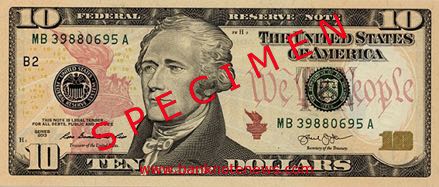
10 dollars, 2013. Signatures: Gumataotao Rios & Jacob Lew.
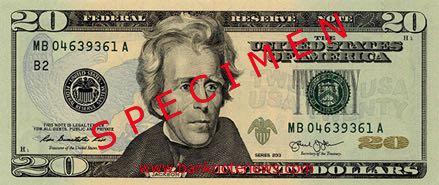
20 dollars, 2013. Signatures: Gumataotao Rios & Jacob Lew.
Courtesy of Peter Mosselberger (Bank Note Museum).
United States new sig/date (2013) 5-dollar note confirmed
09 12, 2013 08:28 Category: North America
5 dollars, 2013. Like P531, but new date and signatures.
Courtesy of Kevin Bautista.
United States new 100-dollar note confirmed
11 10, 2013 11:35 Category: North America
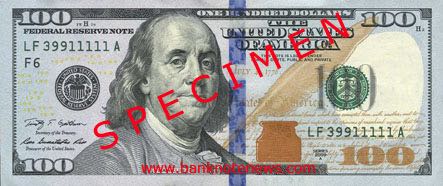
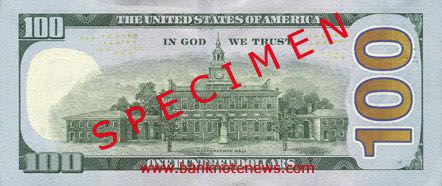
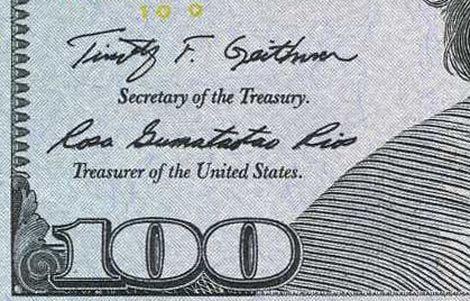
After years of delay, on 8 October 2013 the United States Federal Reserve Bank finally issued its new 100-dollar note dated 2009 A and signed by Timothy F. Geithner as Secretary of the Treasury and Rosie Gumataotao Rios as Treasurer of the United States. The note features many new security enhancements, most noticeable of which is the Motion windowed security thread.
Courtesy of Heritage Auctions' David Liu (www.HA.com).
United States new 100-dollar note production problems persist
15 08, 2013 06:01 Category: North America
According to a New Yorker article dated 13 August 2013, the US Bureau of Engraving and Printing is experiencing "mashing" problems in the production of the the long-delayed new 100-dollar note which is expected to be introduced 8 October 2013.
Courtesy of Webb Linzmayer and Aidan Work.
Courtesy of Webb Linzmayer and Aidan Work.
Boston Globe publishes article on America's boring banknote designs
03 08, 2013 09:38 Category: North America
The Boston Globe features an interesting article dated 4 August 2013 about banknote design written by Leon Neyfakh.
United States unveils new Treasury Secretary signature for 5-dollar note
20 06, 2013 07:59 Category: North America
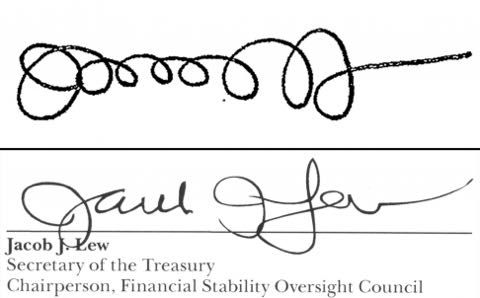
According to an article in the South China Morning Post dated 20 June 2013, this week the United States Treasury Department unveiled the official signature (bottom) of Secretary Jacob J. Lew which will appear on 5-dollar notes this autum and other denominations in the future. Lew's usual signature (top) had been derided as "an absent-minded doodle" unfit to grace US currency.
United States new 100-dollar note issued 08.10.2013
08 10, 2013 13:17 Category: North America

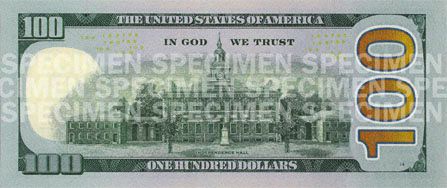
According to a press release dated 24 April 2013, "The Federal Reserve Board on Wednesday announced that the redesigned $100 note will begin circulating on October 8, 2013. This note, which incorporates new security features such as a blue, 3-D security ribbon, will be easier for the public to authenticate but more difficult for counterfeiters to replicate.
"The new design for the $100 note was unveiled in 2010, but its introduction was postponed following an unexpected production delay. To ensure a smooth transition to the redesigned note when it begins circulating in October, the U.S. Currency Education Program is reaching out to businesses and consumers around the world to raise awareness about the new design and inform them about how to use its security features. More information about the new design $100 note, as well as training and educational materials, can be found at www.newmoney.gov."
P.S. As of the afternoon of 8 October, none of the four banks I checked with in my San Francisco neighborhood has the notes nor any idea when they will be available. SF is home to a Federal Reserve Bank branch, so hopefully it won't be too long before I can get one of these. In the meantime, if anyone obtains one, please send scans so they can be confirmed.
Courtesy of Brian Lema and David Surette.
United States 2- and 5-dollar note numismatic product reported
08 01, 2013 22:55 Category: North America
According to a listing on the Bureau of Engraving and Printing's web site, on 11 December 2012, the BEP began selling 150th Anniversary Currency Sets:

The year 2012 marks the 150th Anniversary of the Bureau of Engraving and Printing. In commemoration of this historic occasion, the BEP is proud to present the 150th Anniversary Currency Set.
This limited edition two-note set features a Series 2009 $2 note from the Federal Reserve Bank of New York and a Series 2009 $5 note from the Federal Reserve Bank of Chicago. The Series 2009 $2 note bears a serial number beginning with “2012,” to commemorate 150 years of pride, craftsmanship, and innovation. The Series 2009 $5 note begins with serial number “1862,” to symbolize the origin of the BEP. For each set, the last four digits of the serial numbers on the $5 and $2 notes match.
This exquisitely crafted set includes a 52 page booklet, “150 Years of Pride, Craftsmanship, and Innovation.” This informative booklet traces the Bureau of Engraving and Printing’s rich history and evolution, and includes a certificate authenticating the enclosed notes as genuine United States currency.
Each note is protected by a clear, acid-free polymer sleeve and encased in an attractive folder.
Drawing: All customers who purchase the 150th Anniversary Currency Set during the first month of release will be entered into a drawing to win the opportunity to purchase one of the first 150 sets based on serialization. These first 150 sets will feature personally signed $2 and $5 notes by Treasurer of the United States Rosie Rios. Customers will be enrolled into the drawing equal to the number of sets purchased during the one month enrollment period (December 11, 2012 – January 10, 2013). A quantity restriction of two sets will be imposed for drawing winners. Customers who win the drawing will not be permitted to return previously purchased sets in lieu of any set won and purchased via the drawing. Drawing winners will be contacted after January 11, 2013, via phone/email. Drawing winners are not obligated to purchase the signed 150th Anniversary Currency Sets.
The 150th Anniversary Currency Set is limited to 10,000 total units.
Bulk pricing is available for the 150th Anniversary Currency Set at a price of $44.95 per unit for quantities of 10 or more.
Courtesy of TDS.

The year 2012 marks the 150th Anniversary of the Bureau of Engraving and Printing. In commemoration of this historic occasion, the BEP is proud to present the 150th Anniversary Currency Set.
This limited edition two-note set features a Series 2009 $2 note from the Federal Reserve Bank of New York and a Series 2009 $5 note from the Federal Reserve Bank of Chicago. The Series 2009 $2 note bears a serial number beginning with “2012,” to commemorate 150 years of pride, craftsmanship, and innovation. The Series 2009 $5 note begins with serial number “1862,” to symbolize the origin of the BEP. For each set, the last four digits of the serial numbers on the $5 and $2 notes match.
This exquisitely crafted set includes a 52 page booklet, “150 Years of Pride, Craftsmanship, and Innovation.” This informative booklet traces the Bureau of Engraving and Printing’s rich history and evolution, and includes a certificate authenticating the enclosed notes as genuine United States currency.
Each note is protected by a clear, acid-free polymer sleeve and encased in an attractive folder.
Drawing: All customers who purchase the 150th Anniversary Currency Set during the first month of release will be entered into a drawing to win the opportunity to purchase one of the first 150 sets based on serialization. These first 150 sets will feature personally signed $2 and $5 notes by Treasurer of the United States Rosie Rios. Customers will be enrolled into the drawing equal to the number of sets purchased during the one month enrollment period (December 11, 2012 – January 10, 2013). A quantity restriction of two sets will be imposed for drawing winners. Customers who win the drawing will not be permitted to return previously purchased sets in lieu of any set won and purchased via the drawing. Drawing winners will be contacted after January 11, 2013, via phone/email. Drawing winners are not obligated to purchase the signed 150th Anniversary Currency Sets.
The 150th Anniversary Currency Set is limited to 10,000 total units.
Bulk pricing is available for the 150th Anniversary Currency Set at a price of $44.95 per unit for quantities of 10 or more.
Courtesy of TDS.
United States new 100-dollar notes stolen in transit
13 10, 2012 16:58 Category: North America


According to an Associated Press article dated 12 October 2012, the Federal Bureau of Investigation (FBI) has reported that a "large amount" of newly-designed 100-dollar notes was stolen from a plane that arrived at Philadelphia International Airport around 10:25 a.m. Thursday from Dallas. The newly designed notes aren't scheduled for introduction until 2013, so they will be very hard to spend until then, and presumably the FBI has the serial numbers of the stolen notes as they are all uncirculated from the Fort Worth printing facility of the Bureau of Engraving and Printing.
Courtesy of Dennis Zammit.
Press release: Notes and Coins of the United States of America Federal Reserve System
06 09, 2012 08:21 Category: Book

Publishing and printing complex InterCrim-press is glad to introduce its new book – Notes and Coins of the United States of America Federal Reserve System.
The reference book includes:
- Detailed illustrated descriptions of the US dollars in circulation and their security features;
- Descriptions of coins designated for regular circulation (change) and most popular series of commemorative coins for regular circulation;
- All types of currency notes (treasury notes, gold and silver certificates, national banknotes, World War II temporary currency, etc.) of The US Federal Reserve System since 1928 and until 2012;
- All series of the Federal Reserve Notes (from 1928 to 2009) with the description of their design, security features, and distinctive features of the series: 1928-1934, 1950, 1963, 1969-1988, 1990-1995, 1997-2006, the latest NexGen series;
- Distinctive features in identification design and other security features of US dollar series issued since 1928 until present time. Identification details include the letter denoting a series, the letter and number of Federal Reserve district, the year of issue, control letters of quadrants of printing plate, signatures of Treasurer of the United States and Secretary of the Treasury and other features.
Simple structure of material, pithiness, informative and easy-to-use search system will help you to quickly find necessary and detailed information about any banknote you are interested in.
Now you can order Notes and Coins of the United States of America Federal Reserve System and other InterCrim-Press books online with free delivery at http://www.icpress.ru/en/.
United States new sig/date (2009) 2-dollar note confirmed
30 08, 2012 09:10 Category: North America
2 dollars, 2009. Like P516, but new date and new signatures (Rios / Geithner).
Courtesy of Peter Mosselberger.
United States new sig/date (2006) 5-dollar note confirmed
27 08, 2012 12:53 Category: North America
5 dollars, 2006. Like P517, but new date and new signatures.
Courtesy of Jens Luettschwager.
Press release: Monumental Money: People and Places on U.S. Paper Money
05 07, 2012 13:01 Category: Book | North America
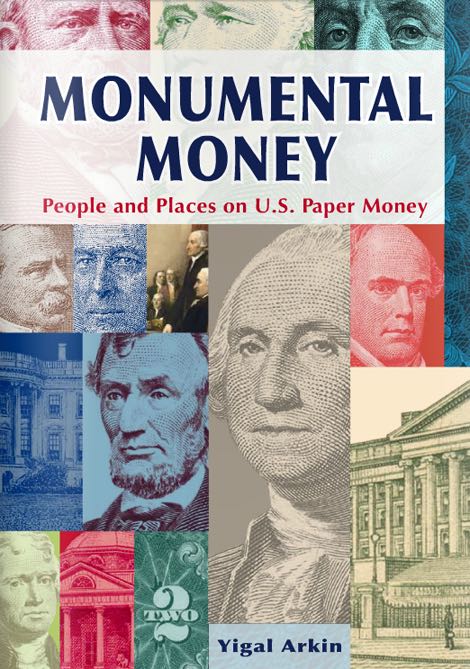
Monumental Money: People and Places on U.S. Paper Money, by Yigal Arkin
Presenting U.S. currency used from the colonial period to the present day, this reference surveys the world of American banknotes and paper currency in three parts:
- Part one presents all the banknotes in circulation today, including those being slowly withdrawn as newer designs replace them, along with color photographs and a brief description of the people and sites depicted on each note.
- Part two provides a brief review of the history of the U.S. monetary system, covering the many different types of banknotes that have been used from the colonial period onward.
- Part three features the high-denomination banknotes no longer in circulation, including the $100,000 note.
History, 112 Pages, 6.5 x 9.5
Four-color Interior
US$17.95 (CAN $19.95)
ISBN: 9780615464541
Arkin Publishing
For details, visit Small Press United from IPG.
United States audit report on new 100-dollar note production problems
11 02, 2012 05:58 Category: North America

Anyone interested in learning details surrounding the delayed introduction of the United States’ new 100-dollar note should read the Office of Inspector General’s Audit Report dated 24 January 2012: OIG-12-038 BILL MANUFACTURING: Improved Planning and Production Oversight Over NexGen $100 Note Is Critical.
Courtesy of Mark A. St. Pierre.
United States new date (2009) 50-dollar note confirmed
08 07, 2011 07:42 Category: North America
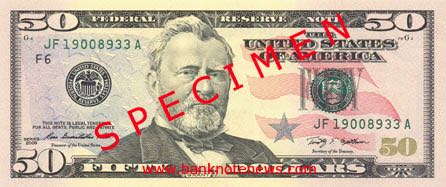

50 dollars (US$50), 2009. Like P527, but new date and signatures (Rosa Gumataotao Rios and Timothy Geithner).
Courtesy of banknoteshop@gmx.net.
United States BEP banknote production falls to modern low in 2010
07 07, 2011 09:23 Category: North America
There’s an interesting article in The New York Times dated 6 July 2011 entitled, “As Plastic Reigns, the Treasury Slows Its Printing Presses,” which discusses the reduced output of banknotes at the BEP in response to the shift to using credit cards for payments, though the death of cash likely remains a long way off.
Courtesy Mark St. Pierre.
Courtesy Mark St. Pierre.
Book review: Moneymakers
12 06, 2011 17:09 Category: Book | North America

Moneymakers: The Wicked Lives and Surprising Adventures of Three Notorious Counterfeiters by Ben Rarnoff (Order from Amazon.com)
This 396-page hardcover was a bit of a disappointment for me, perhaps because I am very interested in the subject of counterfeiting from a technical perspective and this book focuses more on the forgers themselves and the economic state of America during the times in which three “most successful counterfeiters” operated, starting in Colonial times, then the early 1800s, and finally during the Civil War. Also, I found the attempts to draw parallels to the recent Wall Street scandals a bit of stretch, as was the author’s portrayal of these criminals as Robin Hood figures merely helping out the ordinary citizens by producing money the banks couldn’t or wouldn’t supply in sufficient quantities to meet popular demand.
Check out other book reviews and news on the Books page of this site.
United States new date (2006 A) 100-dollar note confirmed
30 05, 2011 10:24 Category: North America
United States new date (2009) 1-, 10-, and 20-dollar notes confirmed
30 05, 2011 10:19 Category: North America
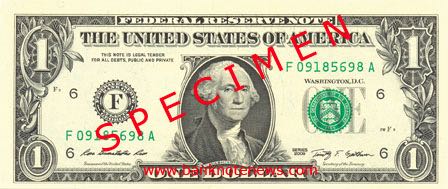
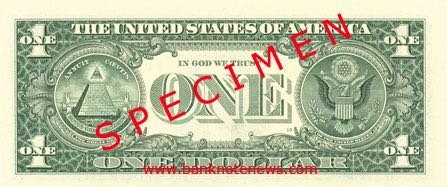

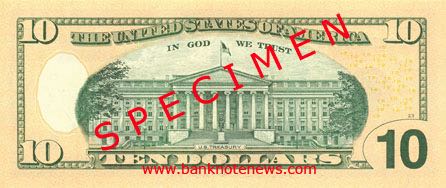

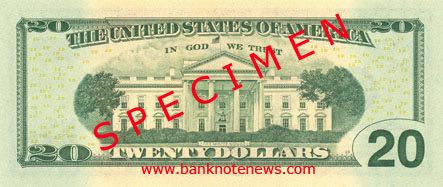


All three above denominations are like preceding issues (P523, P525, and P526, respectively), but with new date (2009) and new signatures of Rosa Gumataotao Rios and Timothy Geithner.
Courtesy of banknoteshop@gmx.net.
Dollar ReDe$ign Project
29 05, 2011 16:19 Category: North America
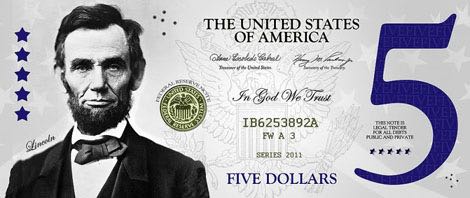
In the same spirit as the Make your Franklin art project I wrote about recently, take a look at the Dollar ReDe$ign Project where artists offer their own new designs for the banknotes of the United States.
Courtesy of Richard Miranda.
United States 100-dollar note gets remade as part of Make your Franklin art project
23 05, 2011 16:55 Category: North America
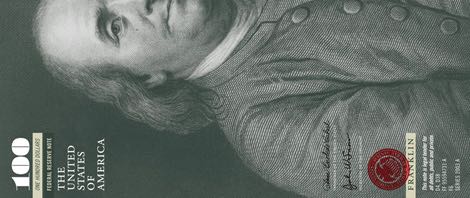
The US BEP is having trouble producing the next generation of 100-dollar notes, but that hasn’t stopped artists around the world from creating their own interesting designs as part of the Make your Franklin art project. Most are pretty whimsical, but some designs are actually rather intriguing. Take a look and have fun finding your favorite.
Courtesy of Wilson Chow.
United States could save billions by eliminating 1-dollar note
13 03, 2011 09:53 Category: North America
According to a US Government Accountability Office report dated 4 March 2011, the US could save $5.5 billion over 30 years by replacing the 1-dollar banknote with a coin because coins last longer in circulation. This is the fourth time the GAO has made this recommendation in the past two decades, and I doubt this latest recommendation will be adopted even in these difficult economic times as no politician wants to be the one to authorize the euthanasia of hte iconic dollar bill with George Washington’s familiar face. Plus the difficulty in getting US citizens to use the 1-dollar coin dates back to the ill-fated Susan B. Anthony dollar. First issued in 1979, the coin was roundly rejected because it was too close in size, shape, and color to the quarter, resulting in confusion during transactions. The Sacagawea dollar issued in 2000 partially solved the color simularity by using a clad which appears “golden” when new, but tarnishes to a dull color after circulation.
It’s unlikely the public will ever choose the coin over the note if both circulate simultaneously, but if the notes were withdrawn, the public would eventually adopt coinage, just as has happened in many other countries around the world that finally faced up to the financial fact that it made little economic sense to lose money on every dollar it prints instead of mints.
It’s unlikely the public will ever choose the coin over the note if both circulate simultaneously, but if the notes were withdrawn, the public would eventually adopt coinage, just as has happened in many other countries around the world that finally faced up to the financial fact that it made little economic sense to lose money on every dollar it prints instead of mints.
Artist Thomas Hipschen: The man behind your (US) money
04 02, 2011 10:06 Category: North America
Here’s an interesting short video about Thomas Hipschen, former engraver for the US Bureau of Engraving and Printing.
United States new 100-dollar note plagued by printing problems
06 12, 2010 12:13 Category: North America
MSNBC has an interesting article and video concerning problems with the new 100-dollar note scheduled for release in 2011.
Courtesy of Alex Zlotin.
Visit msnbc.com for breaking news, world news, and news about the economy
Courtesy of Alex Zlotin.
United States new 100-dollar note delayed
01 10, 2010 11:58 Category: North America
On 1 October 2010, the Federal Reserve Board announced a delay in the issue date of the redesigned US$100 note. This new design incorporates cutting edge, anti-counterfeiting technologies and the Federal Reserve imposes strict quality controls to ensure that users of U.S. currency around the world receive the highest quality notes. The Bureau of Engraving and Printing manufactures Federal Reserve notes and has identified a problem with sporadic creasing of the paper during printing of the new $100 note, which was not apparent during extensive pre-production testing. As a consequence, the Federal Reserve will not have sufficient inventories to begin distributing the new $100 notes as planned. The Bureau of Engraving and Printing is working to resolve this problem, and the Federal Reserve Board will announce a new issue date for the redesigned $100 note as soon as possible. The originally scheduled issue date was 10 February 2011.
United States unveils new 100-dollar note
21 04, 2010 08:42 Category: North America


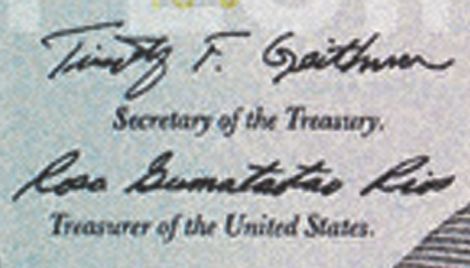
The United States’ long-awaited new 100-dollar banknote was unveiled on 21 April 2010. Like the preceding issues of the denomination, it features Benjamin Franklin on the front and Independence Hall on the back, but is protected by improved anti-counterfeiting features, chief among them is Crane’s windowed Motion thread (which the BEP calls “3-D Security Ribbon”) and a copper-to-green OVI metameric pair patch shaped like an inkwell which reveals the Liberty Bell inside when tilted.. The note also has a solid security thread printed USA 100, a watermark of Franklin, the denomination printed in copper-to-green OVI, intaglio printing, microprinting, and a huge vertical 100 on the back right. The new $100 will begin circulating on 10 February 2011 and will circulate in parallel with older versions of the denomination (all US notes remain legal tender forever). More information can be found on the BEP web site, but due to high traffic on the day of its unveiling, some pages may refuse to load properly.
United States to unveil new 100-dollar note 21 April 2010
05 03, 2010 23:12 Category: North America
According to a media advisory dated 5 March 2010, “The new design for the $100 note will make its debut on Wednesday, April 21 during a ceremony at the Department of the Treasury's Cash Room. The U.S. government redesigns currency in order to stay ahead of counterfeiters and protect the public. Decisions about the redesign of each denomination are guided by the government's close evaluation of the range of ongoing counterfeit threats, whether from digital technology or traditional printing presses.”
“The unveiling of the $100 note is the first step in a global multi-government agency public education program implemented by the Department of the Treasury, the Federal Reserve Board and the U.S. Secret Service, to educate those who use the $100 note about its changes before it begins circulating. The $100 note is the highest value denomination of U.S. currency in general circulation, and it circulates broadly around the world. Public education is an important component of the government's redesigned currency program because a well informed public is our first and best line of defense against counterfeiting. Free training materials for cash-handlers as well as other public education resources will be available in 25 languages at www.newmoney.gov beginning at 10:30 a.m. EDT on April 21.”
Courtesy of Alan Moe.
“The unveiling of the $100 note is the first step in a global multi-government agency public education program implemented by the Department of the Treasury, the Federal Reserve Board and the U.S. Secret Service, to educate those who use the $100 note about its changes before it begins circulating. The $100 note is the highest value denomination of U.S. currency in general circulation, and it circulates broadly around the world. Public education is an important component of the government's redesigned currency program because a well informed public is our first and best line of defense against counterfeiting. Free training materials for cash-handlers as well as other public education resources will be available in 25 languages at www.newmoney.gov beginning at 10:30 a.m. EDT on April 21.”
Courtesy of Alan Moe.
United States considers putting Ronald Reagan on 50-dollar note
04 03, 2010 08:17 Category: North America

On 25 February 2010, North Carolina's Republican Representative Patrick McHenry introduced The President Ronald Reagan $50 Bill Act, numbered H.R. 4705, which proposes replacing the portrait of the 18th president, Ulysses S. Grant, with that of the 40th president, Ronald Reagan. "Every generation needs its own heroes. One decade into the 21st century, it's time to honor the last great president of the 20th and give President Reagan a place beside Presidents Roosevelt and Kennedy," said Congressman McHenry. "President Reagan was a modern day statesman, whose presidency transformed our nation's political and economic thinking."
United States unveils new signature $20 note dated 2006
23 10, 2006 10:40 Category: North America
Treasury Secretary “Hank” Paulson visited the Bureau of Engraving and Printing (BEP) in Washington, DC on October 23, 2006, for the unveiling of the first paper currency with his signature. The signature, which he provided to the BEP on his first day in office this past July, uses his formal name: Henry M. Paulson Jr. The new $20 Series 2006 notes also bear the signature of Anna Escobedo Cabral, Treasurer. The notes are expected to be sent to the Federal Reserve for distribution as needed.
United States unveils new 5-dollar note design
20 09, 2007 12:13 Category: North America
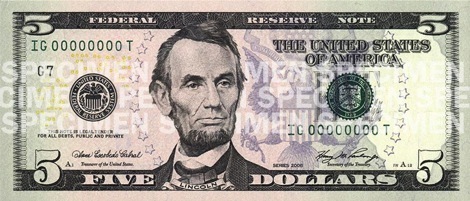
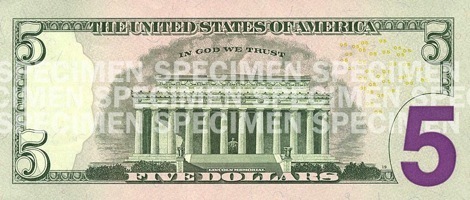
5 dollars (US$5), 2006. Unveiled September 20, 2007. To be issued in “early 2008.” Green and light purple. Enlarged portrait of Abraham Lincoln. Wmk of large 5 to right of portrait, wmk of column of three smaller 5s to left of portrait. Security thread with repeating USA and 5 repositioned to right of portrait; glows blue under UV light. Omron rings. Microprinting. Signatures (Anna Escobedo Cabral, Treasurer of the United States; Henry M. Paulson, Secretary of the Treasury). Lincoln Monument on back with low-vision 5 printed in purple.
